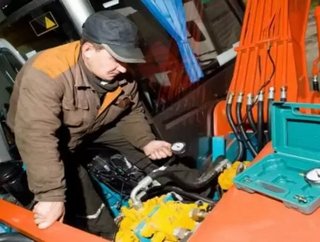Tool Tracking Problems Solved

Written by Wynn Ponder
How to Wake up from the Tool Tracking Nightmare
The energy industry has been plagued by tool tracking problems for as long as there have been oil drilling rigs, natural gas refineries, and electrical transmission lines. Even with the recent proliferation of wind energy services, the same costly challenges exist, and advances in tool tracking technology have been slow in coming.
Though horrendously expensive, the problems appear simple on the surface: astronomical tool shrinkage, ridiculously long wait times for tool service and replacement, operator abuse, and poor calibration and maintenance management. Only through recent advances in radio frequency identification (RFID) technology, combined with the widespread availability of wireless Internet, has progress been made.
RFID to the rescue
With so many different workers sharing tools in the field (far from supervisory oversight), shrinkage has always been rampant. So how do you make employees accountable for the tools they use? Answer: radio frequency identification tags. Tiny RFID tags identify both tools and the employees who check them out, taking all the guess work out of tool inventory control, even in the field.
The portable tool crib
Specially outfitted shipping containers act as portable tool cribs to provide onsite inventory of spare hydraulic wrenches, pumps, hand tools, etc. When an employee enters the crib and removes a tool from a bin, automated bin scales record the inventory reduction. When the employee leaves the crib, his personal RFID tag triggers the system to finalize the tool's transfer into his possession, and a camera automatically snaps a photo to verify his identity. All transactions are recorded by web based tool tracking software that can be reviewed by supervisors anywhere in the world.
When the employee takes the tool to his truck--a well equipped mobile workshop--he scans the tool into inventory with a portable RFID reader. He can also verify on-board inventory of other tools he'll need at the work site and verify the maintenance and calibration of every piece of equipment.
Both the employee and his supervisors receive proactive notifications of coming maintenance and calibration dates via Internet, anywhere in the world. When tools need to be replaced or serviced, inventory control personnel receive automated updates by email. The tool tracking software also works seamlessly with most enterprise asset management programs for fully automated inventory control.
SEE OTHER TOP STORIES IN THE ENERGY DIGITAL CONTENT NETWORK
Powering California with Nuclear Energy
Hammer of the Thor: A Safer Nuclear Technology
October's issue of Energy Digital has gone live!
The preventative maintenance software component of these systems, taken alone, can be a lifesaver by preventing breakdowns. With the availability of redundant inventory onsite, wait times for replacement tools are reduced from months to minutes.
Even without the need for portable tool cribs and field vehicles, elements of these new tool tracking systems will find use in permanent installations like refineries and manufacturing facilities. Any operation that's currently losing money from downtime, calibration and shrinkage can benefit from this new generation of tool tracking solutions.
Wynn Ponder is a freelance writer and managing editor of the Choctaw Tool Tracking Blog.






